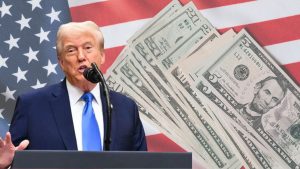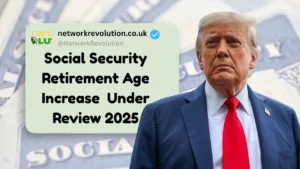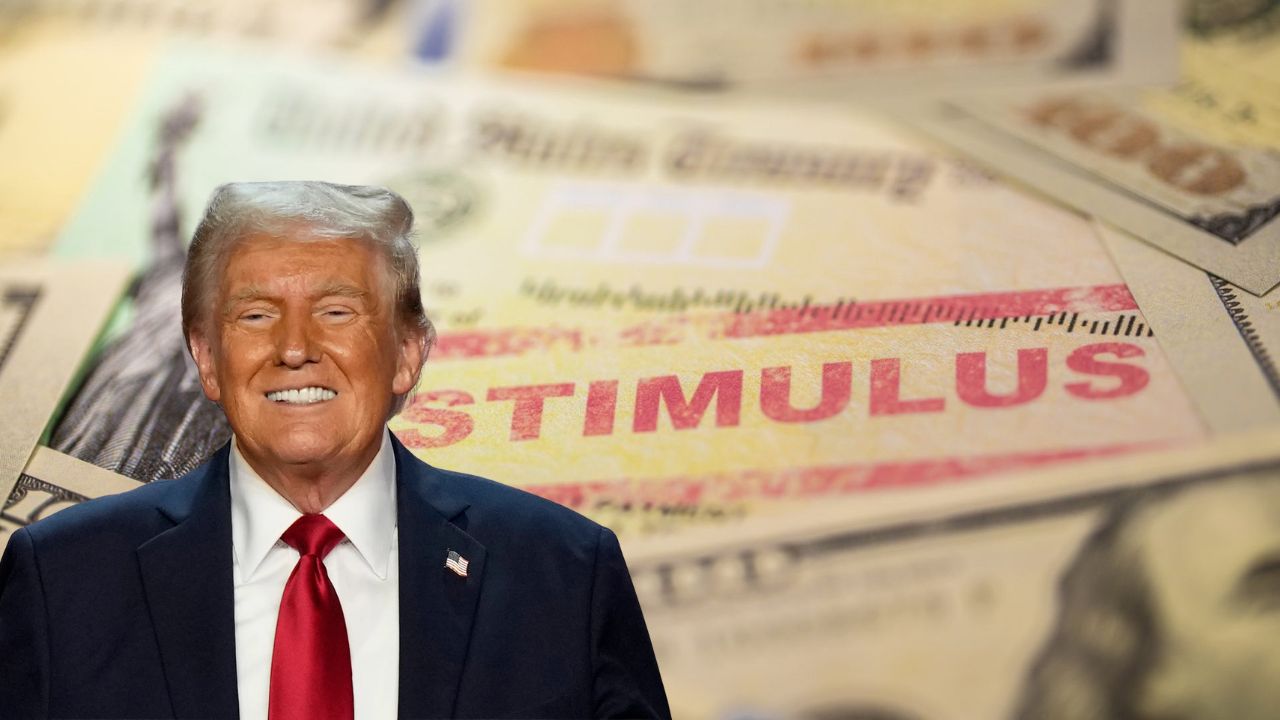President Donald Trump is once again promising to deliver stimulus payments to millions of Americans — this time in the form of a $2,000 “tariff stimulus payments”. While the White House says the President is “committed” to the plan, questions remain about when — or if — the checks will actually arrive.

White House Press Secretary Karoline Leavitt confirmed that the administration is actively reviewing options to distribute what could become the first round of IRS stimulus checks since the COVID-19 pandemic.
“The president made it clear he wants to make it happen,” Leavitt told reporters at the White House. “So his team of economic advisers are looking into it.”
Also Read Federal $2,000 Direct Deposit in November 2025 – What’s Real, What’s Not, and How to Stay Safe
Federal $2,000 Direct Deposit in November 2025 – What’s Real, What’s Not, and How to Stay Safe
Trump’s $2,000 Tariff Stimulus Payment Proposal
The idea of a tariff rebate payment surfaced again on November 9, when Trump posted on his Truth Social account:

“A dividend of at least $2000 a person (not including high income people!) will be paid to everyone,” he wrote, suggesting that the money would come directly from federal tariff revenue.

Trump’s social media statement reignited public discussion about another potential round of IRS stimulus checks — payments that would be funded not by deficit spending, but through revenues from tariffs on imported goods.
However, the administration has released few details about how the money would be distributed, who would qualify, or when the IRS direct deposits might begin.

In a follow-up post, Trump suggested another option: “Republicans should give money directly to your personal health savings accounts,” he said.
Background: Similar Proposals Have Surfaced Before
This isn’t the first time in 2025 that Trump has proposed some form of direct financial relief.
| Date | Proposal | Status |
|---|---|---|
| February 2025 | $5,000 “DOGE dividend” using savings from the Department of Government Efficiency | No official proposal introduced |
| July 2025 | $600 tariff rebate, introduced by Sen. Josh Hawley as The American Worker Rebate Act of 2025 | Did not pass committee |
| November 2025 | $2,000 tariff dividend for most Americans | Under White House review |
The earlier proposals — including a one-time $600 stimulus payment and the more ambitious $5,000 “DOGE dividend” — both failed to advance through Congress.
What Are the Chances of Getting a 2025 Stimulus Check?
As of mid-November, no official legislation authorizing new IRS stimulus payments has been passed or introduced. The Internal Revenue Service (IRS) has not confirmed any upcoming direct deposits or paper checks to households.
That means that, at least for now, the $2,000 tariff dividend payment remains an idea, not a guarantee.
“There’s no bill, no budget authority, and no timeline,” said Maya MacGuineas, president of the nonpartisan Committee for a Responsible Federal Budget. “The president’s intent may be genuine, but Congress still holds the purse strings.”
The CRFB estimates that Trump’s proposal to send $2,000 stimulus payments to most Americans would cost roughly $600 billion a year — about twice the amount the United States currently generates from new tariffs on imports.
| Projected Costs vs. Revenue | Amount (2025) |
|---|---|
| Estimated Tariff Revenue | $300 billion |
| Estimated Cost of $2,000 Payment | $600 billion |
| Shortfall | -$300 billion |
Treasury Secretary: “The $2,000 Dividend Could Come in Many Forms”
In an interview on ABC’s This Week (Nov. 9), Treasury Secretary Scott Bessent hinted that Americans might see the benefit of Trump’s plan in ways other than a direct check.
“The $2,000 dividend could come in lots of forms,” Bessent said. “It could be just the tax decreases that we are seeing on the president’s agenda — no tax on tips, no tax on overtime, no tax on Social Security, deductibility of auto loans.”
That comment suggests the administration may consider combining stimulus payments with tax breaks rather than traditional IRS direct deposit stimulus checks.
Still, Bessent said the President’s team is exploring both cash-based payments and tax-credit options, emphasizing that no decision has been finalized.
When Could the Next IRS Direct Deposits Arrive?
Historically, once Congress authorizes new stimulus checks, the IRS moves quickly to distribute funds — often within weeks via direct deposit for taxpayers who have bank information on file.
If the White House develops a formal proposal and Congress approves it, analysts say the earliest possible rollout for a new round of IRS direct deposits would likely be sometime in mid-2026, depending on the legislative timeline.
| Scenario | Timeline Estimate |
|---|---|
| White House proposal introduced to Congress | Early 2026 |
| Bill passage and funding authorization | Spring 2026 |
| IRS payment processing and distribution | Mid-to-late 2026 |
“If this plan gets traction, the IRS could use its existing direct deposit infrastructure to deliver payments quickly,” said David Lenk, a policy researcher at the Urban-Brookings Tax Policy Center. “But that’s only after Congress passes something concrete.”
What Experts Are Saying?
Economists and budget analysts have expressed skepticism about both the financial feasibility and economic impact of another large-scale stimulus payment program.
“Even if tariffs generate hundreds of billions, they’re still taxes — and they raise prices for consumers,” explained Erica York, senior economist at the Tax Foundation. “Paying for stimulus checks with tariff revenue is politically catchy, but economically complicated.”
Others, however, believe the move could have short-term benefits by boosting consumer confidence.
“If households suddenly get $2,000 from the government, they’ll spend it,” said Mark Zandi, chief economist at Moody’s Analytics. “That stimulus would ripple through retail, travel, and small business sectors — but it would also widen the deficit.”
Reminder: The Last Time the IRS Issued Stimulus Payments
The IRS last sent out nationwide direct deposits and stimulus checks during the COVID-19 pandemic, under both the Trump and Biden administrations.
| Round | Year | Payment Per Adult | Program |
|---|---|---|---|
| First | 2020 | $1,200 + $500 per child | CARES Act |
| Second | 2021 | $600 + $600 per child | Consolidated Appropriations Act |
| Third | 2021 | $1,400 per adult + dependents | American Rescue Plan |
These checks were distributed primarily through IRS direct deposits, with paper checks and debit cards used for households without bank accounts.
The final deadline to claim the $1,400 Recovery Rebate Credit for missed payments was April 15, 2025, closing the chapter on pandemic-era stimulus.
IRS Cautions Against Stimulus Scams
Whenever talk of new stimulus payments circulates online, scams follow. The IRS has reminded taxpayers that it never initiates contact via text, email, or social media to collect personal information for stimulus checks or rebates.
“There are no pre-registrations, fees, or special links to claim a stimulus payment,” an IRS spokesperson said in a recent advisory. “If and when Congress authorizes a new program, the IRS will automatically send funds to eligible recipients.”
Bottom Line
So, what’s the status of the $2,000 stimulus checks right now?
- It’s still just a proposal. No legislation has been introduced or passed.
- The IRS has not scheduled any new direct deposits or checks.
- The White House says Trump “wants to make it happen,” but Treasury officials are still exploring how.
Until Congress takes formal action, the $2,000 tariff dividend remains a talking point — not a payment.
“The president’s message is clear — he wants to give back to working Americans,” Leavitt said. “But how that happens is still being determined.”
For now, Americans should treat the proposal as a policy goal, not an imminent stimulus payment — and stay tuned for updates from IRS.gov and the U.S. Treasury for any future IRS direct deposit announcements.

